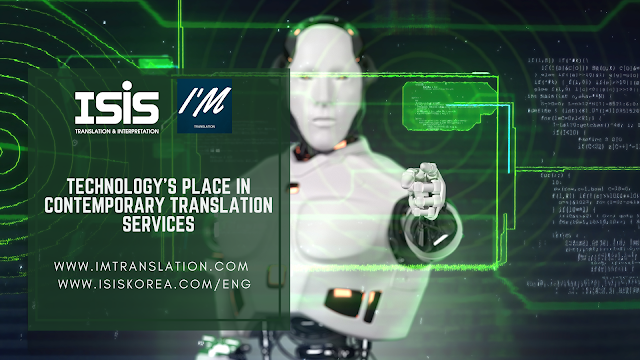Technology's Place in Contemporary Translation Services
Technology's Place in Contemporary Translation Services
There is a greater need than
ever for top-notch translation services in the globalized world of today. This
need is mostly met by contemporary technology, which improves the effectiveness
and precision of translation procedures. Artificial intelligence (AI), machine
translation, and Computer-Assisted Translation (CAT) tools are three major
technological developments that have completely transformed the translation
sector.
Computer-Assisted
Translation (CAT) Tools
CAT tools are
specialized software applications designed to support translators in their
work. These tools break down large texts into smaller segments, usually
sentences, and store each translated segment in a database known as a
Translation Memory (TM). When the same or similar text appears in future
projects, the CAT tool suggests previous translations to the translator,
ensuring consistency and saving time.
Key benefits of
CAT tools include:
ü Consistency: By storing translations in a TM, CAT
tools help maintain consistency across different documents and projects, which
is particularly important for brand messaging and technical documentation.
ü Efficiency: Translators can work faster by
leveraging previously translated segments, reducing the need to translate
repetitive text from scratch.
ü Quality Control: Many CAT tools come with built-in
quality assurance features, such as spell checkers, grammar checkers, and
terminology management systems, to help ensure high-quality translations.
Machine Translation
The automated
translation of text by a computer without human assistance is known as machine
translation, or MT. Text is analyzed and translated across languages using
sophisticated algorithms by machine translation (MT) systems like Microsoft
Translator and Google Translate.
Machine
translation comes in two primary varieties:
ü Rule-Based Machine Translation (MT): This technique
uses dictionaries and a set of linguistic rules for every language pair. It
frequently has trouble translating colloquial idioms and less structured
content, even when it can translate predictable and structured text accurately.
ü Large volumes of multilingual text data are used by
statistical and neural machine translation techniques to find trends and
produce translations. The most recent development, neural machine translation
(NMT), leverages deep learning algorithms to produce translations that are more
fluid and realistic.
While MT can quickly
process large volumes of text, its output often requires human post-editing to
correct errors and improve readability. Despite this, MT is incredibly valuable
for tasks that require rapid translation of large datasets, such as translating
user-generated content on social media or e-commerce product descriptions.
Artificial intelligence
(AI)
When it comes to innovation in the translation sector, AI is leading the way. Artificial Intelligence (AI) improves CAT tools and MT systems, resulting in higher translation quality and efficiency by utilizing machine learning and neural networks.
AI is being used in translation services in the following ways:
ü Contextual Understanding: AI systems are able to
translate texts more accurately when they comprehend the context of the
original language, particularly when dealing with idiomatic or ambiguous terms.
ü Artificial Intelligence (AI) makes it possible for
real-time translation in programs like video conferences, which makes it easier
for people of different languages to communicate with one other.
ü Automated Quality Assurance: AI-driven technologies
may identify translation issues automatically and recommend fixes, saving a lot
of time and effort on human proofreading.
AI also plays a significant role in developing adaptive translation systems that learn from user corrections and feedback, continuously improving over time.
Conclusion
The integration of
technology in modern translation services has transformed the industry, making
translation faster, more consistent, and more accurate. CAT tools, machine
translation, and AI each bring unique advantages that, when combined, create a
powerful toolkit for translators. As technology continues to evolve, we can
expect even greater advancements that will further enhance the quality and
efficiency of translation services, enabling more effective communication in
our increasingly interconnected world.
Need a translation? I’M Translation and ISIS Korea provides professional translation and interpretation services.
If your company or
institution requires expert translation or interpretation services, consider
working with ISIS Korea. We provide a
variety of services adapted to the unique requirements of your industry,
providing clear and accurate communication between languages. Contact us via www.isiskorea.com/eng




Comments
Post a Comment